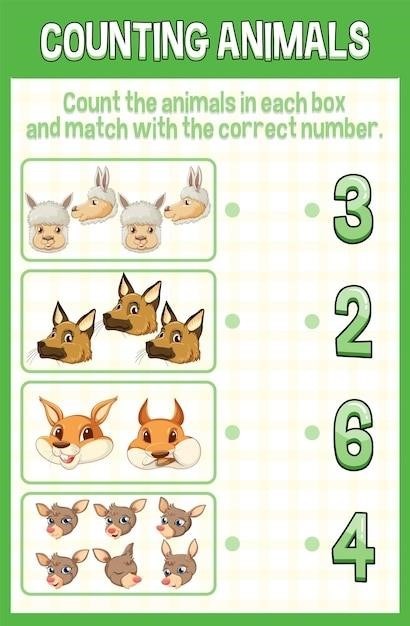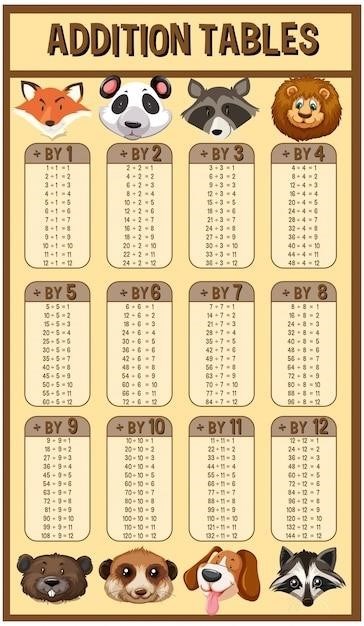A systems of equations with 3 variables word problems worksheet is a valuable tool for students learning about solving systems of equations. These worksheets typically provide practice problems that involve real-world scenarios, requiring students to set up and solve systems of equations with three unknown variables. They are often used in algebra classes and can be found online or in textbooks.
What is a System of Equations with 3 Variables?
A system of equations with three variables is a set of equations that contain three unknown quantities, typically represented by the variables x, y, and z. These equations can be linear or nonlinear, but for solving word problems, linear systems are generally more common.
A linear equation in three variables has the general form Ax + By + Cz = D, where A, B, C, and D are constants. The coefficients A, B, and C represent the relationships between the variables, while D is a constant term. For example, the equation 2x + 3y ౼ z = 5 is a linear equation in three variables.
To solve a system of equations with three variables, you need to find the values of x, y, and z that satisfy all the equations simultaneously. This means finding a set of values that makes each equation true when substituted into it. There are various methods for solving such systems, including elimination, substitution, and matrix methods.
Systems of equations with three variables are commonly used in various fields, including science, engineering, economics, and finance. They are particularly useful for modeling real-world situations involving multiple unknown quantities and their relationships.
Solving Systems of Equations with 3 Variables Word Problems
Solving systems of equations with three variables in word problems requires a systematic approach. Here’s a breakdown of the steps involved⁚
Define Variables⁚ Carefully read the word problem and identify the three unknown quantities. Assign variables to each quantity, such as x, y, and z.
Set Up Equations⁚ Translate the information given in the word problem into mathematical equations. Each sentence or phrase that relates the variables should correspond to an equation.
Solve the System⁚ Use one of the following methods to solve the system of equations⁚
- Elimination⁚ Add or subtract equations to eliminate one variable at a time, eventually isolating one variable and then back-substituting to find the others.
- Substitution⁚ Solve one equation for one variable and substitute that expression into the other equations.
- Matrix Methods⁚ Use matrices to represent the system of equations and apply matrix operations to solve for the variables.
Check the Solution⁚ Substitute the values you found for the variables back into the original equations to verify that they satisfy all of them.
Interpret the Solution⁚ Express the solution in the context of the original word problem. This means explaining what the values you found represent in terms of the problem’s scenario.
Word problems involving systems of equations with three variables can be challenging, but by following these steps, you can break them down into manageable parts and arrive at the correct solution.
Types of Word Problems
Systems of equations with three variables can be used to model a wide variety of real-world scenarios. Here are some common types of word problems that often involve three variables⁚
Mixture Problems⁚ These problems involve combining different quantities of substances with varying concentrations or values. For example, a problem could ask for the amount of each type of coffee bean needed to create a blend with a specific price per pound.
Rate and Work Problems⁚ These problems involve calculating the rate at which tasks are completed, often by multiple individuals or machines working together. For instance, a problem could ask for the time it takes for three workers to complete a project, given their individual work rates.
Geometry Problems⁚ Systems of equations can be used to solve problems involving geometric shapes, such as finding the dimensions of a rectangular prism or the angles of a triangle.
Investment Problems⁚ These problems involve investing money in different accounts with varying interest rates. The goal is usually to determine how much money should be invested in each account to achieve a certain overall return.
Age Problems⁚ These problems involve finding the ages of individuals based on relationships between their ages at different points in time. For example, a problem could ask for the current ages of three family members given their ages five years ago.
Word problems involving three variables often require careful analysis and understanding of the relationships between the quantities involved. By recognizing the type of problem and applying the appropriate methods for solving systems of equations, you can successfully model and solve these real-world scenarios.
Setting Up the Equations
Setting up the equations is the crucial first step in solving systems of equations with three variables. This process involves translating the information given in the word problem into a set of algebraic equations. Here’s a breakdown of the steps involved⁚
Identify the Variables⁚ Carefully read the word problem and determine the three unknown quantities. Assign variables to each of these quantities. For example, if the problem involves the cost of three different items, you might use the variables ‘x’, ‘y’, and ‘z’ to represent their respective costs.

Formulate Equations⁚ Translate the information provided in the word problem into mathematical equations. Each equation should represent a relationship between the variables. Look for key phrases that indicate mathematical operations, such as “sum,” “difference,” “product,” or “ratio.” For instance, if the problem states that the sum of two quantities is equal to a certain value, you would write an equation representing that sum.
Check for Completeness⁚ Ensure that you have created a system of three equations, one for each of the unknown variables. If you have less than three equations, you may need to re-examine the word problem for additional information or relationships that can be expressed mathematically.
Verify Units⁚ Make sure that the units of measurement are consistent throughout the system of equations. If one equation involves dollars and another involves cents, you’ll need to convert the units to match.
By following these steps, you can accurately translate a word problem into a system of equations, paving the way for a successful solution.
Solving the System of Equations
Solving a system of equations with three variables requires a systematic approach. There are several methods commonly used, and the choice often depends on the specific system and personal preference⁚
Elimination Method⁚ This method involves strategically manipulating the equations to eliminate one variable at a time. By adding or subtracting equations, you can create new equations where one variable is absent. This process is repeated until you have a single equation with one variable. Solving this equation gives you the value of one variable. Substitute this value back into the previous equations to solve for the remaining variables.
Substitution Method⁚ This method involves solving one equation for one variable in terms of the other variables. This expression is then substituted into the remaining equations, reducing the number of variables in each equation. Continue this process until you have a single equation with one variable. Solve this equation and substitute the value back into the previous equations to find the remaining variables.
Matrix Method⁚ This method uses matrices to represent the system of equations. By performing operations on the matrix, such as row reduction, you can solve for the unknown variables. This method can be particularly useful for larger systems of equations.
Graphical Method⁚ This method involves plotting the equations as three-dimensional planes in a coordinate system. The solution to the system is represented by the point where all three planes intersect. This method can be more visual and helpful for understanding the concept of a system of equations, but it can be challenging to implement accurately.
The choice of method depends on the specific system of equations and the solver’s comfort level with each technique.
Example Word Problem
A classic example of a word problem involving systems of equations with three variables is the “fruit stand” scenario. Imagine a fruit stand selling apples, oranges, and bananas. You know the following⁚
- A customer buys 2 apples, 3 oranges, and 1 banana for $5.
- Another customer buys 1 apple, 2 oranges, and 3 bananas for $4.
- A third customer buys 3 apples, 1 orange, and 2 bananas for $6.
The goal is to determine the price of each individual fruit. To solve this problem, you would set up a system of three equations, where⁚
- x represents the price of an apple
- y represents the price of an orange
- z represents the price of a banana
The equations would be⁚
- 2x + 3y + z = 5
- x + 2y + 3z = 4
- 3x + y + 2z = 6
You would then use any of the methods discussed earlier (elimination, substitution, or matrices) to solve for x, y, and z, ultimately finding the price of each fruit. This example illustrates how systems of equations with three variables can model real-world situations and be used to solve for unknown values.
Practice Problems
Practice problems are essential for mastering the skill of solving systems of equations with three variables. These problems should present a variety of scenarios and challenge students to apply their knowledge in different contexts. Here are some typical examples found on worksheets⁚
- Ticket Sales⁚ A movie theater sells adult tickets, student tickets, and senior tickets. The total revenue from a particular showing is given, along with the number of tickets sold in each category. Students need to determine the price of each type of ticket.
- Investment Portfolio⁚ A person invests in three different types of accounts⁚ a savings account, a bond, and a stock. The total investment amount, the interest rates for each account, and the total interest earned are provided. The task is to find the amount invested in each account.
- Mixing Solutions⁚ A chemist needs to create a specific solution by mixing three different solutions with known concentrations. The final volume and concentration of the mixture are given. The challenge is to find the volume of each solution needed for the mixture.
- Distance, Rate, and Time⁚ A plane travels at a certain speed with the wind, and then at a different speed against the wind. The distances traveled in each direction and the total time of the trip are known. Students need to solve for the plane’s speed in still air and the speed of the wind.
These practice problems provide students with valuable experience in setting up systems of equations, choosing appropriate methods to solve them, and interpreting the solutions within the context of the word problem.
Tips for Solving Word Problems
Successfully tackling word problems involving systems of equations with three variables requires a systematic approach. Here are some tips to make the process smoother⁚
- Define Variables⁚ Clearly identify the unknown quantities in the problem and assign them appropriate variables. Use descriptive variable names (e.g., ‘a’ for adults, ‘s’ for students, ‘b’ for bonds) to make the equations easier to understand.
- Translate Words into Equations⁚ Carefully read the problem and identify the relationships between the variables. Translate these relationships into mathematical equations. Be sure to use the correct operations (addition, subtraction, multiplication, division) based on the problem’s wording.
- Solve the System⁚ Choose a suitable method to solve the system of equations. Elimination, substitution, or matrices can be used, depending on the structure of the equations.
- Check for Reasonableness⁚ Once you have found a solution, check to see if it makes sense in the context of the problem. Do the values of the variables seem realistic?
- Practice, Practice, Practice⁚ The best way to improve your ability to solve word problems is to practice regularly. Work through as many problems as possible, focusing on understanding the underlying concepts and developing a consistent problem-solving strategy.
By following these tips, students can approach word problems with confidence and develop a strong foundation in solving systems of equations with three variables.
Using a Worksheet
A systems of equations with 3 variables word problems worksheet is a valuable tool for both teachers and students. It provides a structured way to practice solving real-world problems involving three unknown quantities. The worksheet typically presents a series of word problems, each requiring the student to set up a system of three equations and solve for the unknowns.
Here’s how to effectively use a worksheet⁚
- Read the problem carefully⁚ Understand the context and identify the key information and the unknowns.
- Define variables⁚ Assign appropriate letters to represent each unknown quantity.
- Translate words into equations⁚ Formulate three equations based on the relationships described in the problem.
- Solve the system of equations⁚ Use methods like elimination, substitution, or matrices to solve for the three variables.
- Check your answers⁚ Substitute the solutions back into the original equations to verify that they satisfy all conditions of the problem.
- Review and learn⁚ After completing the worksheet, review the solutions and understand the reasoning behind each step. Identify any areas where you need further practice or clarification.
Using a worksheet effectively helps students develop problem-solving skills, improve their understanding of systems of equations, and gain confidence in applying these concepts to real-life scenarios.
Benefits of Using a Worksheet
Incorporating systems of equations with 3 variables word problems worksheets into the learning process offers numerous benefits for students, enhancing their understanding and problem-solving abilities. Here are some key advantages⁚
- Structured Practice⁚ Worksheets provide a structured framework for students to practice solving systems of equations involving three variables. The problems are typically organized in a logical sequence, allowing students to gradually increase the complexity of the tasks.
- Real-World Application⁚ Word problems on the worksheets often present scenarios that are relatable to real-life situations, helping students connect mathematical concepts to practical applications. This fosters a deeper understanding and appreciation for the relevance of algebra in everyday life.
- Problem-Solving Skills⁚ By working through word problems, students develop critical problem-solving skills. They learn to analyze the given information, identify key relationships, translate words into equations, and devise strategies to solve for the unknowns.
- Improved Understanding⁚ Worksheets reinforce the concepts learned in class, providing students with opportunities to practice and solidify their understanding of systems of equations with three variables. This repetition helps to embed the knowledge and make it more accessible for future applications.
- Self-Assessment⁚ Worksheets allow students to self-assess their progress and identify areas where they need more practice. They can compare their solutions to answer keys or work through the problems with classmates, gaining valuable insights into their understanding and areas for improvement.
Overall, systems of equations with 3 variables word problems worksheets are a valuable resource for teachers and students, providing a structured and engaging way to practice and master essential algebraic concepts.



